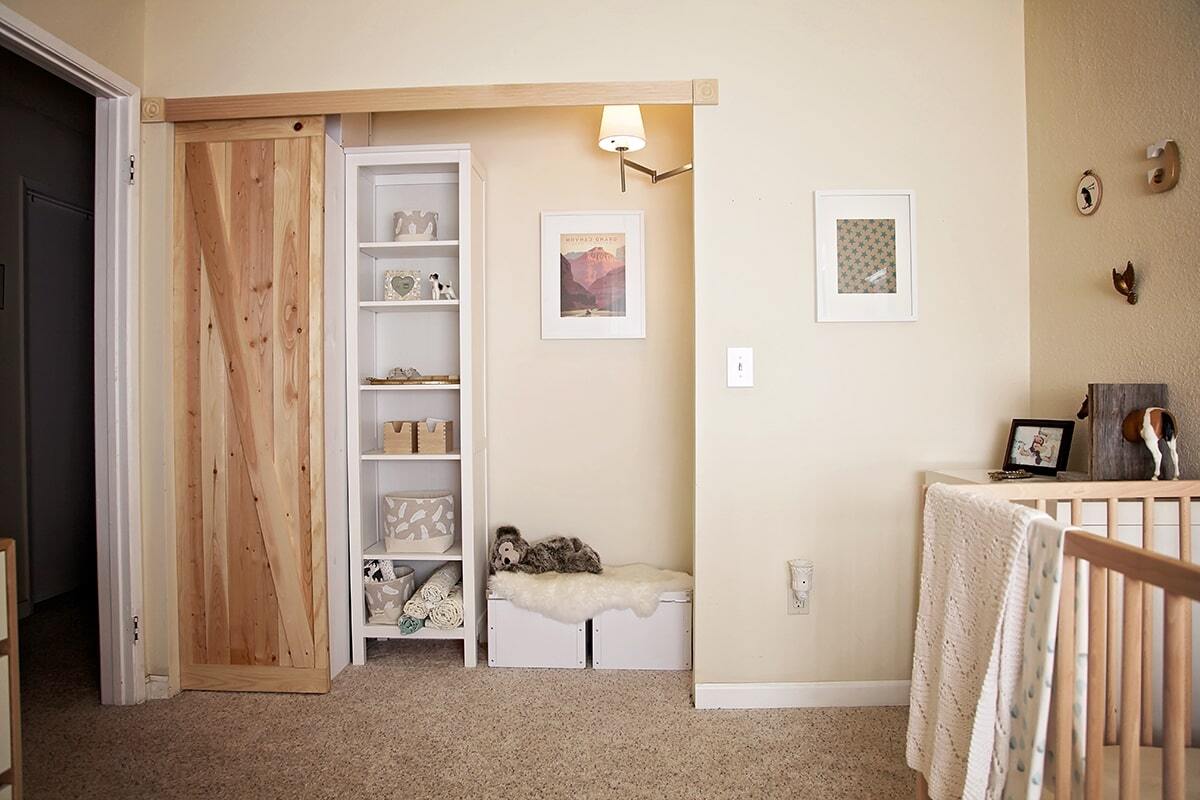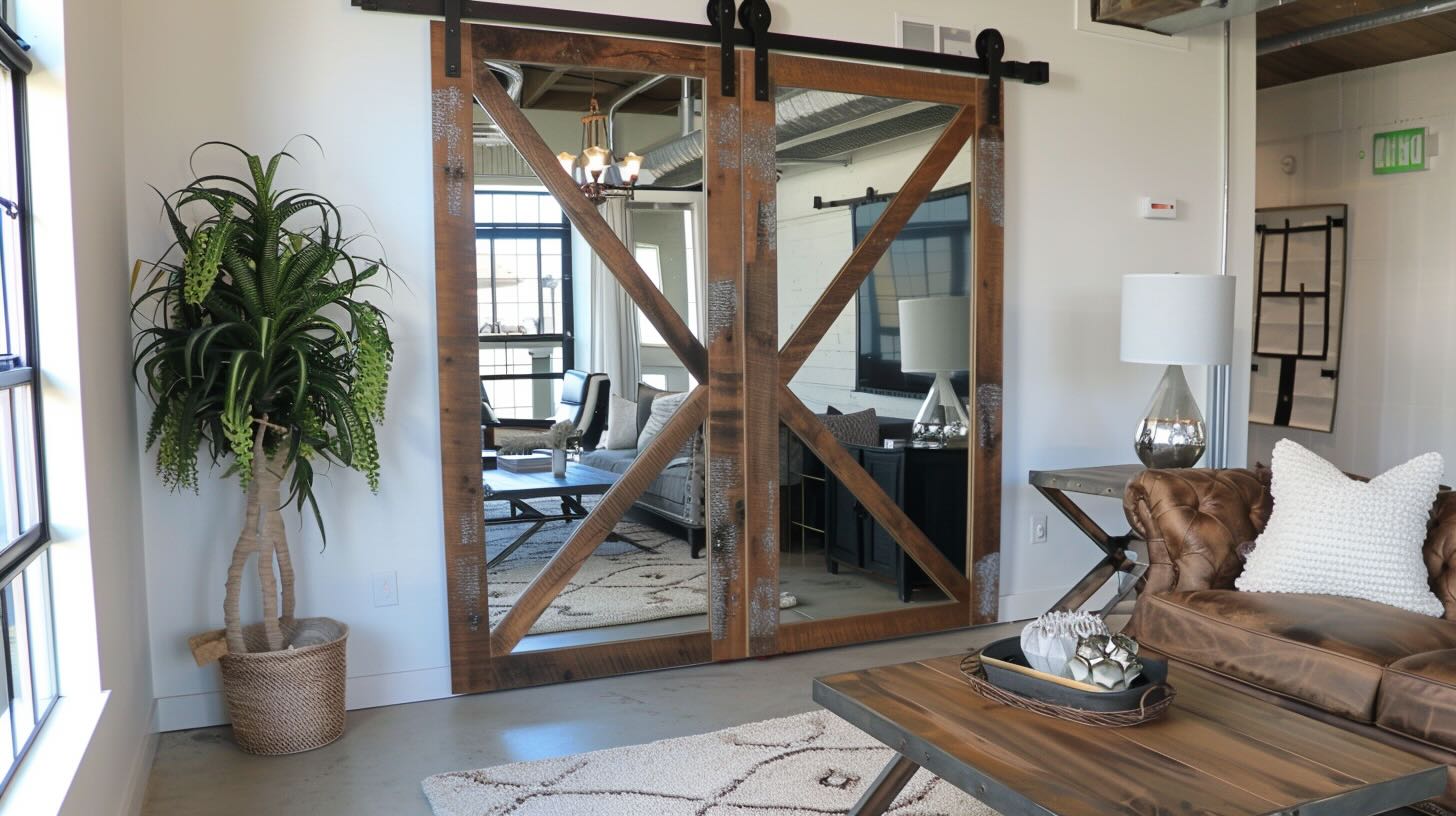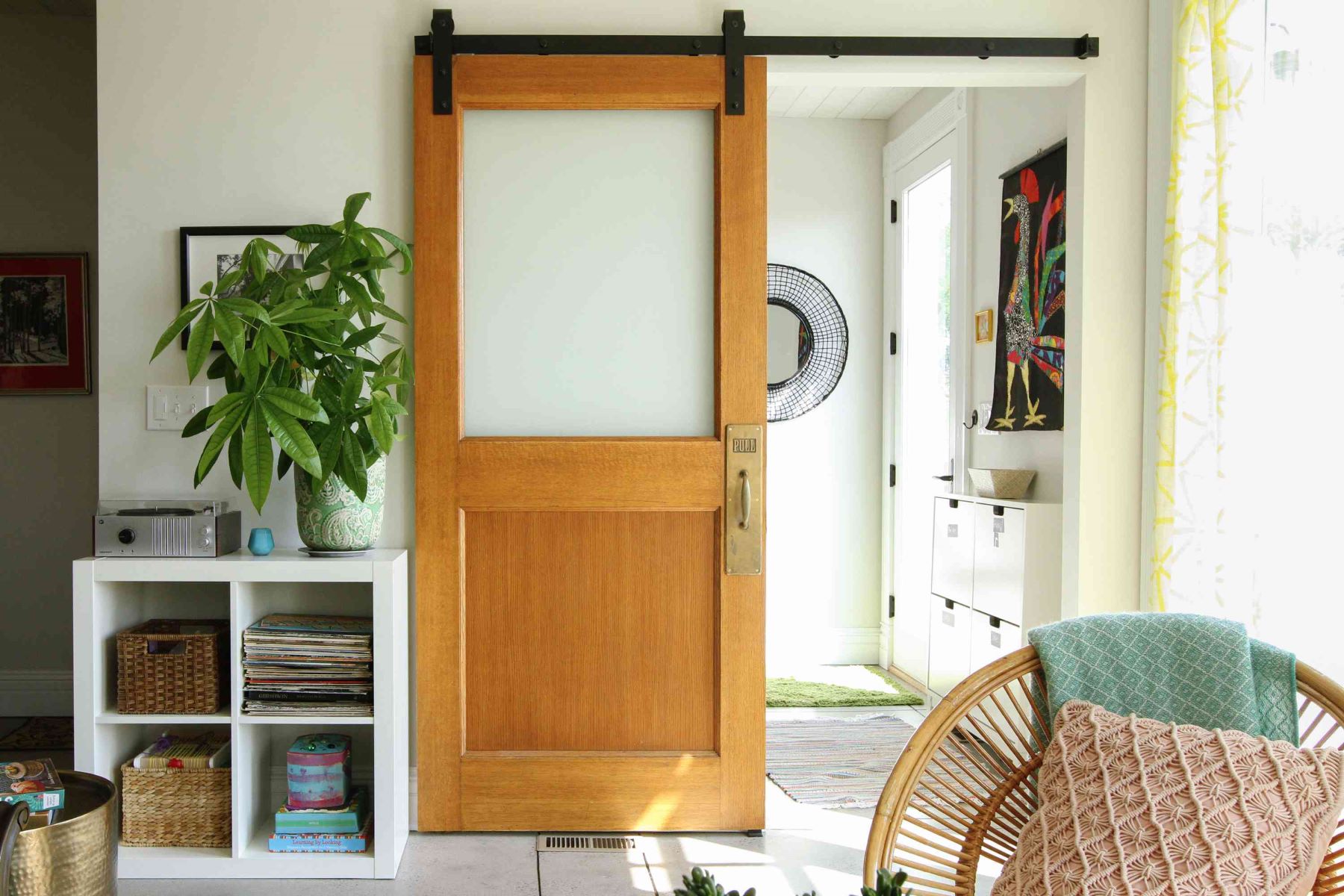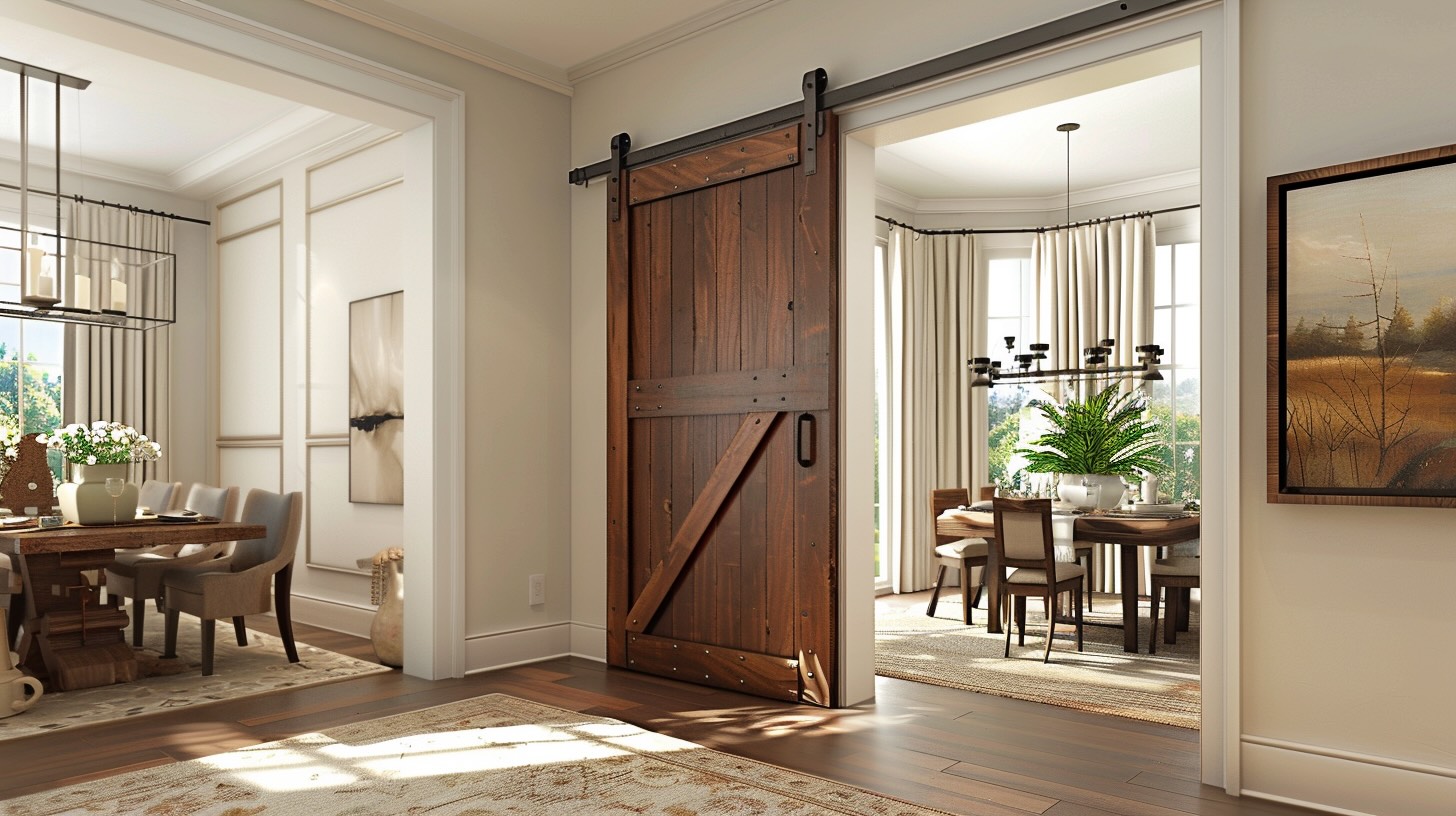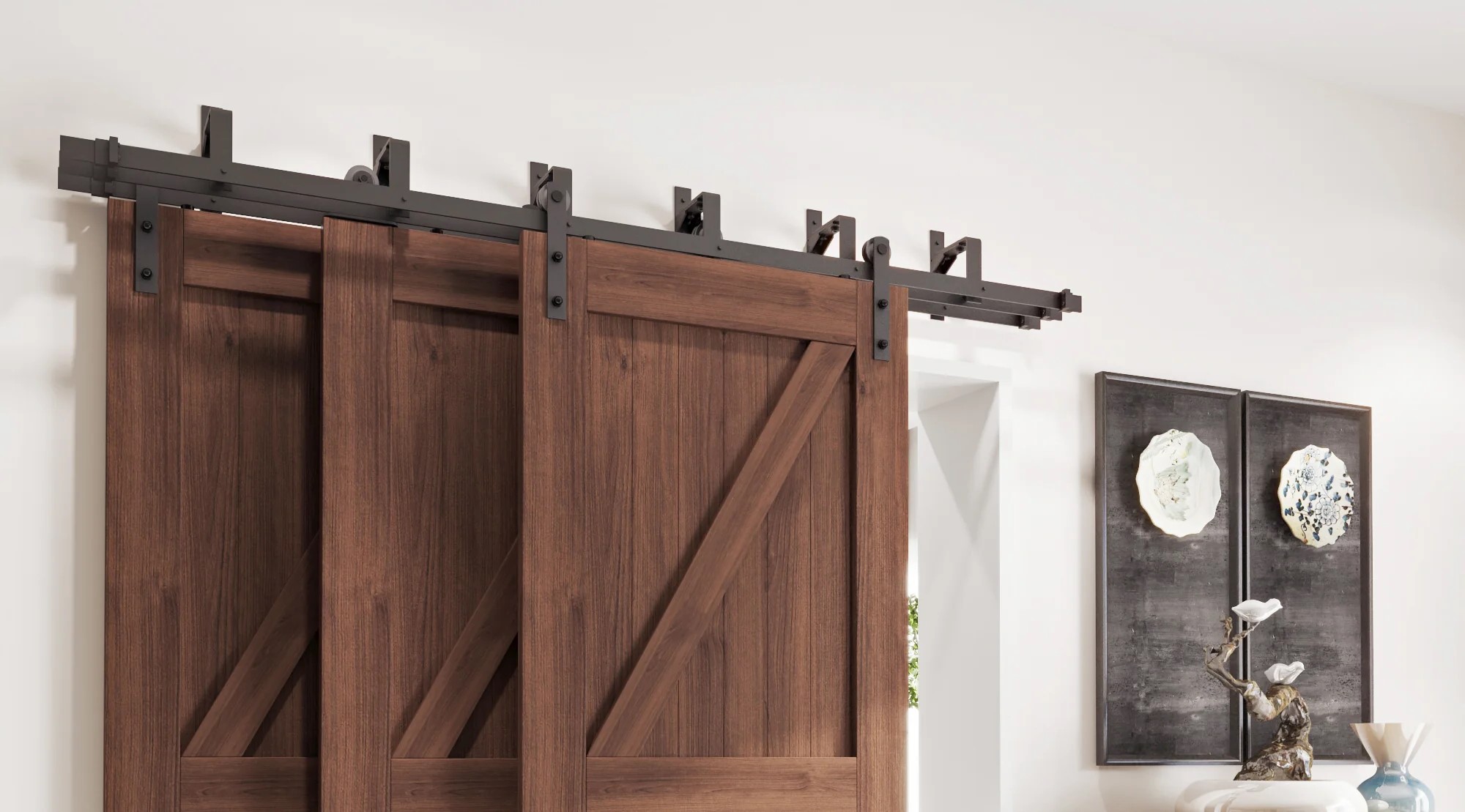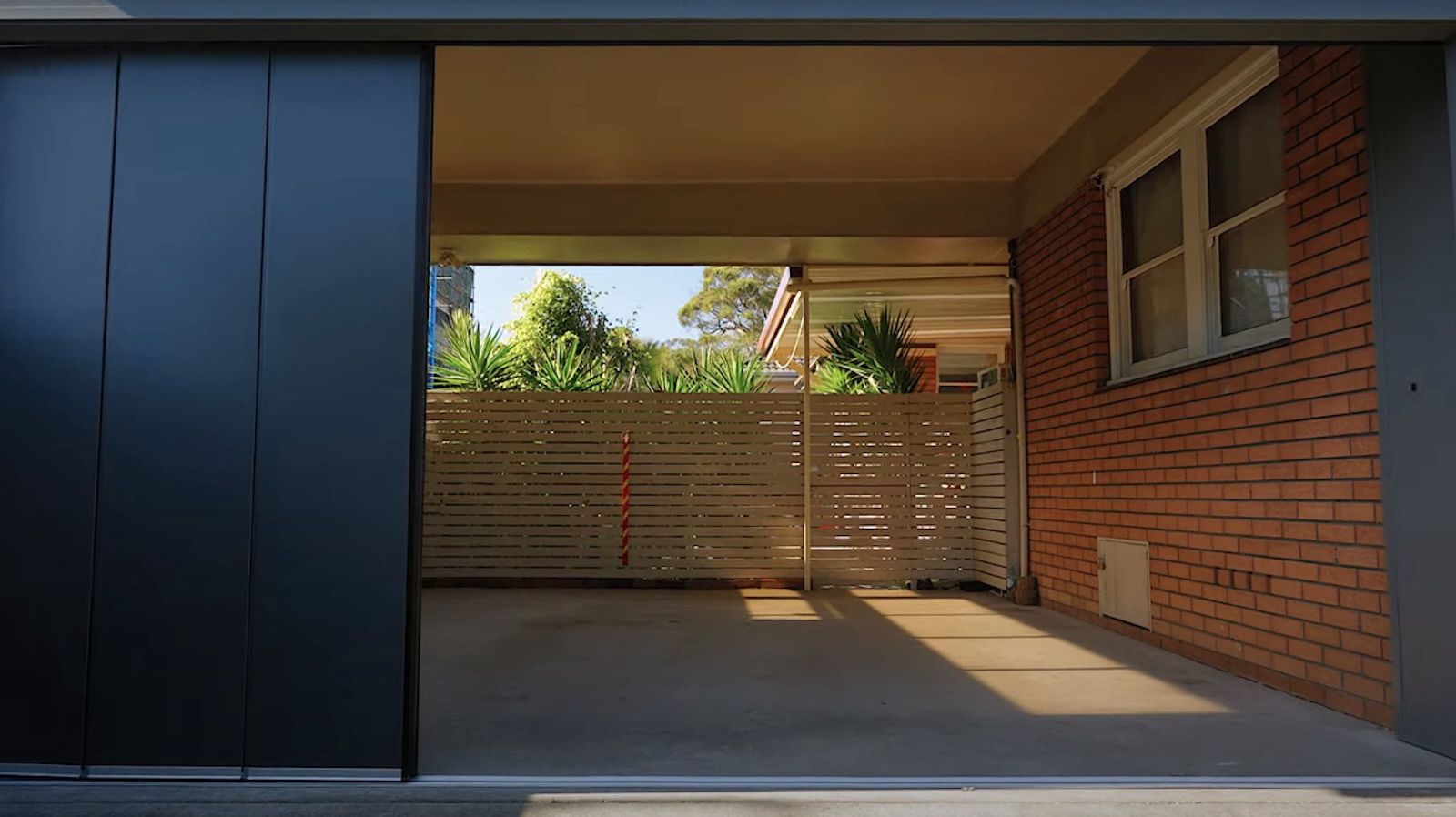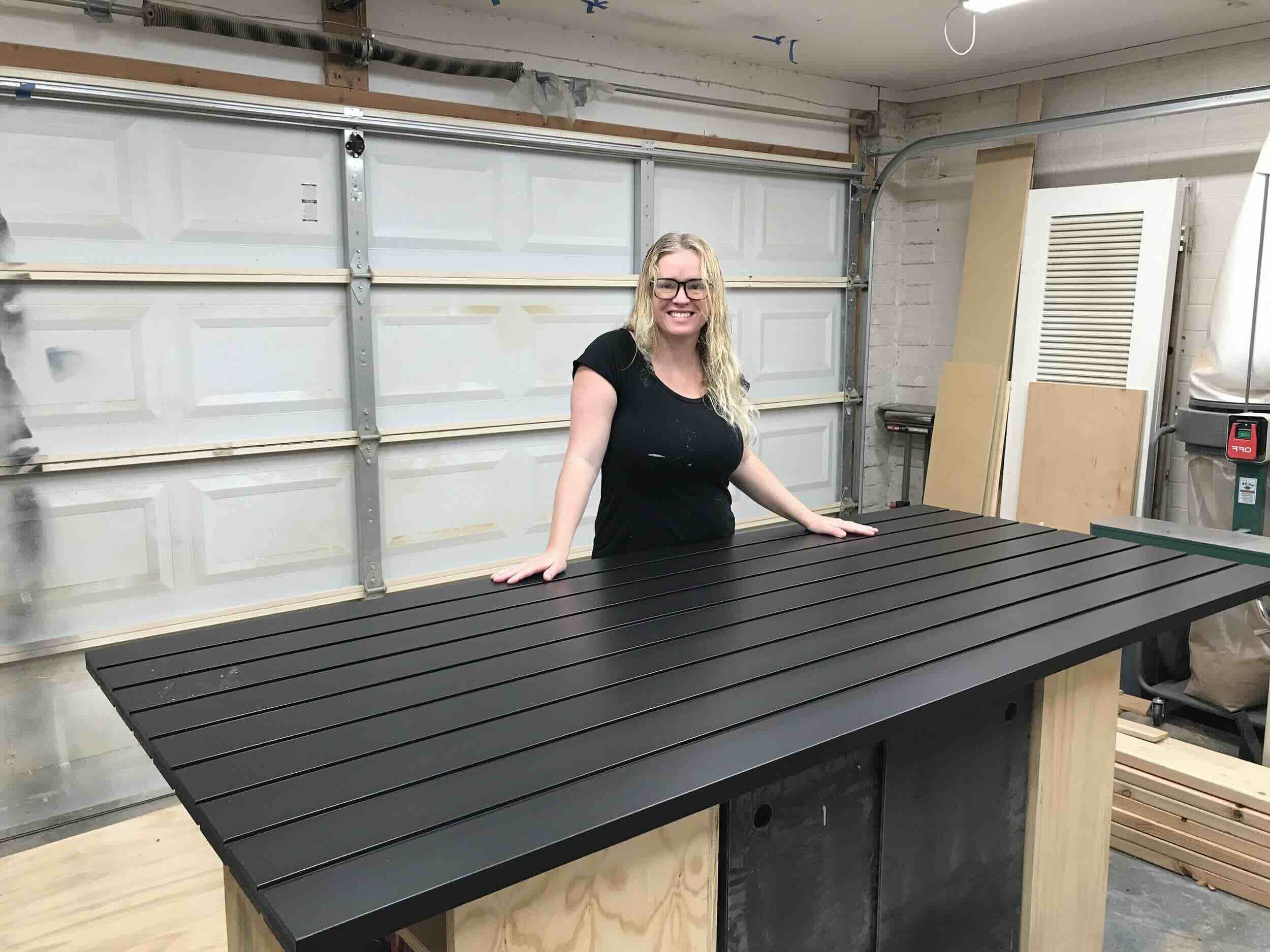Home>Create & Decorate>DIY & Crafts>Barn Shed Plans: DIY Guide For Building Your Own Rustic Storage Space
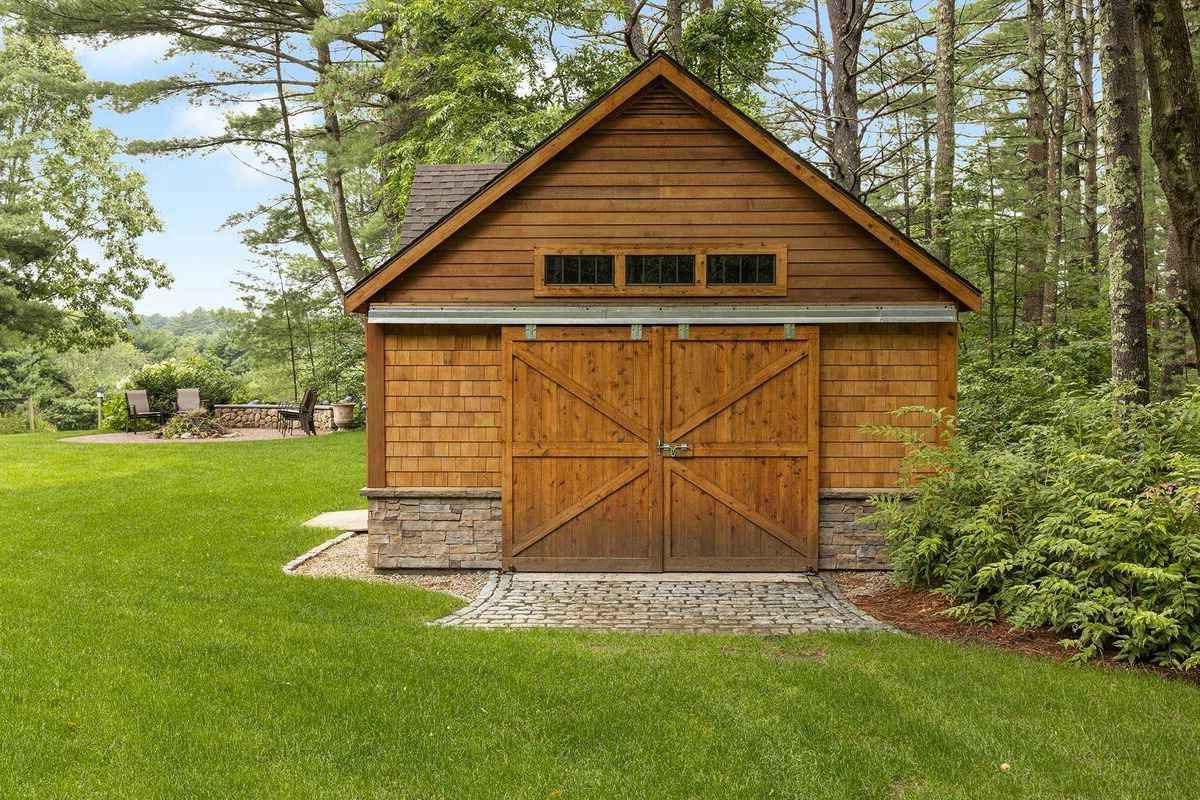

DIY & Crafts
Barn Shed Plans: DIY Guide For Building Your Own Rustic Storage Space
Published: February 23, 2024

Content Creator specializing in woodworking and interior transformations. Caegan's guides motivate readers to undertake their own projects, while his custom furniture adds a personal touch.
Discover step-by-step DIY barn shed plans for creating your own rustic storage space. Get expert tips and ideas for your next DIY & Crafts project.
(Many of the links in this article redirect to a specific reviewed product. Your purchase of these products through affiliate links helps to generate commission for Twigandthistle.com, at no extra cost. Learn more)
Introduction
Are you in need of extra storage space for your outdoor equipment, tools, or gardening supplies? Building a barn shed can be a rewarding and practical solution. Whether you're a seasoned DIY enthusiast or a novice looking to embark on a new project, constructing your own rustic storage space can be a fulfilling endeavor. With the right guidance and a bit of creativity, you can create a functional and visually appealing structure that complements your property.
In this comprehensive DIY guide, we will walk you through the step-by-step process of building your very own barn shed. From selecting the ideal location to adding the finishing touches, we'll cover everything you need to know to bring your vision to life. Whether you envision a quaint, weathered barn shed nestled in your backyard or a spacious storage haven for your farm equipment, this guide will equip you with the knowledge and inspiration to make it a reality.
By following these instructions and tapping into your creativity, you can customize your barn shed to suit your specific needs and aesthetic preferences. Whether you prefer a classic, traditional design or a more modern interpretation, the possibilities are endless. With the right tools, materials, and a can-do attitude, you'll be well on your way to creating a practical and charming addition to your property.
So, roll up your sleeves, gather your tools, and let's embark on this DIY adventure together. Whether you're seeking a weekend project or a long-term endeavor, building a barn shed can be a fulfilling and worthwhile pursuit. Let's dive into the details and bring your vision of a rustic storage space to life.
Read more: How to Build a DIY Barn Door Cabinet
Choosing the Right Location for Your Barn Shed
Selecting the perfect location for your barn shed is a crucial first step in the construction process. The placement of your shed will not only impact its visual appeal but also its functionality and longevity. Here are some essential factors to consider when choosing the right spot for your barn shed:
-
Accessibility: Ensure that the location of your barn shed allows for easy access. Whether you plan to store gardening tools, lawnmowers, or other equipment, having a convenient pathway to and from the shed is essential. Consider proximity to your home, garden, or driveway to streamline the transportation of items in and out of the shed.
-
Sunlight and Ventilation: Opt for a location that receives an adequate amount of sunlight throughout the day. Sunlight helps prevent moisture buildup and promotes the longevity of the shed's materials. Additionally, good ventilation is crucial to prevent musty odors and mildew. Positioning the shed in an area with natural airflow will help keep the interior fresh and dry.
-
Ground Stability: Assess the stability of the ground where you plan to build your barn shed. Avoid low-lying areas that are prone to flooding or areas with poor drainage. Opt for a level surface to ensure the stability and durability of the shed's foundation.
-
Aesthetic Appeal: Consider the visual impact of the shed's placement on your property. Whether you aim for a picturesque backdrop or seamless integration with your landscape, the location should complement the overall aesthetic of your outdoor space.
-
Local Regulations: Check with local authorities or homeowner's associations for any regulations or restrictions regarding the placement of outbuildings. Ensure compliance with setback requirements and property lines to avoid any legal issues in the future.
By carefully considering these factors, you can identify the optimal location for your barn shed. Once you've selected the perfect spot, you'll be ready to move on to the next steps in the construction process, bringing you one step closer to having your own rustic storage space.
Gathering Materials and Tools
Before diving into the construction of your barn shed, it's essential to gather all the necessary materials and tools to ensure a smooth and efficient building process. Here's a comprehensive list of items you'll need to have on hand before you begin:
Materials:
- Lumber: Purchase high-quality lumber in the dimensions specified by your chosen shed plans. Opt for pressure-treated wood for the foundation and any components that will be in direct contact with the ground to prevent rot and decay.
- Fasteners: Stock up on galvanized nails, screws, and other fasteners to secure the various components of the shed. Ensure you have a variety of sizes to accommodate different parts of the construction.
- Roofing Materials: Depending on your design preferences, select appropriate roofing materials such as shingles, metal panels, or corrugated sheets. Ensure that the chosen material provides adequate protection from the elements.
- Siding: Choose durable and weather-resistant siding materials such as plywood, oriented strand board (OSB), or exterior-grade panels. Consider the aesthetic appeal and durability of the siding to complement the overall look of your barn shed.
- Foundation Support: If your shed plans call for a concrete foundation, gather the necessary concrete mix, gravel, and reinforcement materials. For other foundation types, ensure you have the required materials for support and stability.
Tools:
- Measuring and Marking Tools: Equip yourself with a tape measure, carpenter's square, and marking tools to ensure accurate measurements and cuts throughout the construction process.
- Cutting Tools: A circular saw, handsaw, and miter saw will be essential for cutting lumber and other materials to the required dimensions. Additionally, have a sharp utility knife for precision cutting.
- Fastening Tools: Invest in a quality hammer, power drill with screwdriver bits, and a nail gun for efficient fastening of components. Ensure you have the necessary accessories such as drill bits and driver attachments.
- Leveling and Plumbing Tools: A sturdy level and plumb bob will aid in ensuring that the shed's components are aligned and positioned correctly during assembly.
- Safety Gear: Prioritize safety by having protective gear such as work gloves, safety goggles, and a dust mask. Additionally, sturdy work boots and appropriate clothing will contribute to a safe and comfortable working environment.
By gathering these materials and tools in advance, you'll be well-prepared to embark on the construction of your barn shed. Having everything at your disposal will streamline the building process and minimize interruptions, allowing you to focus on bringing your vision to life.
Read more: How to Build DIY Bifold Barn Doors
Building the Foundation
The foundation serves as the backbone of your barn shed, providing stability and structural integrity. Before commencing the construction of the foundation, it's crucial to carefully assess the ground conditions and select the most suitable foundation type for your specific needs. Here's a detailed guide to building a solid foundation for your barn shed:
Assessing Ground Stability
Begin by evaluating the stability and drainage of the chosen site. If the ground is prone to water accumulation or lacks proper drainage, consider grading the area or implementing drainage solutions to prevent water-related issues in the future. Additionally, clear the site of any debris, rocks, or vegetation to ensure a level and debris-free surface for the foundation.
Choosing the Foundation Type
Select a foundation type that aligns with your shed design, local building codes, and ground conditions. Common foundation options include concrete slabs, concrete piers, and skids. Concrete slabs provide a durable and long-lasting foundation, while concrete piers offer versatility and stability. Skids, consisting of pressure-treated beams placed directly on the ground, are suitable for smaller sheds and offer ease of installation.
Preparing the Foundation Site
Once the foundation type is determined, mark the perimeter of the foundation using stakes and string, ensuring that the dimensions align with your shed plans. Excavate the marked area to the required depth, allowing for proper clearance and ensuring a level surface. If constructing a concrete foundation, install formwork to contain the concrete and reinforce it with steel mesh or rebar for added strength.
Read more: DIY Door Building Guide
Pouring and Curing Concrete (if applicable)
For concrete foundations, carefully pour the concrete into the prepared formwork, ensuring even distribution and proper leveling. Use a screed board to level the concrete surface and eliminate any excess. Allow the concrete to cure according to the manufacturer's recommendations, providing adequate time for it to achieve optimal strength and stability.
Installing Skids or Piers
If opting for skids or piers, position them according to the shed plans, ensuring proper spacing and alignment. Use a level to confirm that the skids or piers are evenly positioned and adjust as needed to achieve a level foundation.
Adding Anchor Points
For enhanced stability, consider adding anchor points to secure the shed to the foundation. Anchor brackets or straps can be embedded in the concrete or attached to the skids or piers, providing a secure connection between the shed and the foundation.
By meticulously following these steps and paying close attention to detail, you'll establish a sturdy and reliable foundation for your barn shed. A well-constructed foundation sets the stage for the rest of the building process, ensuring that your rustic storage space stands the test of time.
Constructing the Frame
The frame of a barn shed forms the structural skeleton that supports the entire edifice, providing stability and shape. Constructing the frame is a pivotal phase in the shed-building process, and attention to detail is paramount to ensure a sturdy and durable structure. Here's a comprehensive guide to constructing the frame of your barn shed:
Read more: DIY Bathroom Barn Door Ideas
1. Cutting and Assembling Lumber
Begin by carefully measuring and cutting the lumber according to the dimensions specified in your shed plans. Use a reliable saw, such as a circular saw or miter saw, to achieve precise cuts. Organize the cut lumber into designated piles based on their purpose in the frame assembly, facilitating an efficient construction process.
2. Assembling Wall Frames
Lay out the bottom plates of the wall frames on the foundation, ensuring they are aligned according to the shed plans. Secure the bottom plates to the foundation using anchor bolts or appropriate fasteners. Next, position the wall studs vertically between the bottom and top plates, adhering to the specified spacing outlined in the shed plans. Use a level to ensure the studs are plumb and secure them in place with nails or screws.
3. Erecting the Roof Trusses
If your shed design incorporates a truss roof, assemble the roof trusses according to the specified design and dimensions. Once assembled, carefully lift the trusses into position on top of the wall frames, ensuring they are aligned and securely anchored. Use temporary bracing to hold the trusses in place while the necessary connections are made.
4. Adding Bracing and Reinforcements
Install diagonal bracing within the wall frames to enhance the structural integrity of the shed. Additionally, consider adding reinforcement elements such as hurricane ties or truss brackets to secure the connections between the trusses and the wall frames, further fortifying the frame against external forces.
Read more: DIY Garage Shed Plans Guide
5. Checking for Alignment and Stability
Throughout the frame construction process, consistently verify the alignment and stability of the assembled components. Utilize a level and measuring tools to confirm that the frame is square, plumb, and structurally sound. Address any discrepancies promptly to ensure a solid and reliable frame for your barn shed.
By meticulously following these steps and adhering to the specifications outlined in your shed plans, you'll successfully construct a robust frame for your barn shed. The frame serves as the backbone of the structure, laying the groundwork for the subsequent phases of the construction process. With the frame in place, you're one step closer to realizing your vision of a functional and charming rustic storage space.
Adding the Roof and Siding
With the frame of your barn shed securely in place, the next crucial step is to add the roof and siding, transforming the skeletal structure into a weather-resistant and visually appealing storage space. The roof and siding not only provide protection from the elements but also contribute to the overall aesthetic charm of the shed. Here's a detailed guide on adding the roof and siding to your barn shed:
Roof Installation
-
Selecting Roofing Materials: Begin by selecting the roofing material that best suits your design preferences and climate considerations. Options range from traditional asphalt shingles to durable metal panels or rustic cedar shakes. Choose a material that complements the overall aesthetic of your property while providing reliable protection against rain, snow, and UV exposure.
-
Applying Underlayment: Before installing the roofing material, apply a weather-resistant underlayment to the roof deck. This acts as a secondary barrier against moisture and enhances the shed's overall weatherproofing. Ensure the underlayment is properly secured and overlaps according to manufacturer recommendations to maximize its effectiveness.
-
Installing Roofing Material: Follow the manufacturer's guidelines for the installation of the chosen roofing material. Whether you opt for shingles, metal panels, or another roofing type, ensure proper alignment and secure fastening to prevent wind uplift and water infiltration. Pay attention to the recommended installation techniques to achieve a professional and long-lasting roof.
-
Adding Flashing and Trim: Complete the roof installation by adding flashing around roof penetrations such as vents and chimneys. Additionally, install trim pieces along the roof edges to provide a finished look and further protect the shed from water intrusion. Properly installed flashing and trim contribute to the overall durability and aesthetic appeal of the roof.
Siding Application
-
Choosing Siding Materials: Select siding materials that align with your design vision and provide durability against the elements. Common options include wood siding, vinyl panels, or fiber cement boards. Consider the maintenance requirements, weather resistance, and visual impact of each material before making your selection.
-
Preparing the Wall Surfaces: Ensure the wall frames are free of protruding nails or other obstructions that may hinder the installation of the siding. Apply a moisture barrier, such as building wrap or house wrap, to the exterior walls to enhance weather resistance and prevent moisture infiltration.
-
Installing Siding Panels: Following the manufacturer's guidelines, begin installing the siding panels from the bottom of the wall, working your way upward. Use appropriate fasteners and techniques for the chosen siding material, ensuring proper alignment and secure attachment. Pay attention to overlapping joints and corner details to create a seamless and weather-resistant exterior.
-
Adding Trim and Finishing Touches: Complete the siding installation by adding trim pieces around windows, doors, and corners. This not only provides a polished look but also serves to protect vulnerable areas from moisture and wear. Consider decorative elements such as window shutters or architectural details to enhance the visual appeal of the shed's exterior.
By meticulously following these steps and paying attention to detail, you'll successfully add the roof and siding to your barn shed, elevating its functionality and visual charm. The completed roof and siding not only protect the shed's interior from the elements but also contribute to the overall character of your property, creating a rustic and inviting storage space.
Read more: DIY Corrugated Metal Barn Door Guide
Installing Doors and Windows
The installation of doors and windows is a pivotal phase in the construction of a barn shed, as it not only enhances the functionality and accessibility of the structure but also contributes to its aesthetic appeal. Properly installed doors and windows provide natural light, ventilation, and ease of entry, transforming the shed into a welcoming and practical space. Here's a detailed guide on the installation of doors and windows for your barn shed:
Selecting Suitable Doors and Windows
Begin by selecting doors and windows that align with the design and functional requirements of your barn shed. Consider the size, style, and material of the doors and windows to ensure they complement the overall aesthetic and provide the desired level of durability. Common options include hinged doors, sliding doors, single-hung windows, and double-hung windows, each offering unique benefits in terms of functionality and visual appeal.
Preparing Door and Window Openings
Carefully measure and mark the locations for the doors and windows based on your shed plans. Use a level and square to ensure accurate placement and alignment of the openings. Once marked, proceed to cut out the openings using appropriate tools such as a saw or jigsaw, taking care to maintain clean and precise cuts to accommodate the doors and windows.
Installing Doors
For hinged doors, begin by attaching the hinges to the door frame according to the manufacturer's instructions. Position the door in the opening, ensuring it fits snugly and operates smoothly. Secure the hinges to the door frame and test the functionality of the door, making any necessary adjustments to ensure proper alignment and operation. For sliding doors, follow the specific installation guidelines provided by the manufacturer, ensuring smooth and secure operation within the designated opening.
Read more: DIY Pipe Barn Door Hardware Guide
Adding Windows
Prior to installing the windows, apply a bead of waterproof caulk around the window opening to create a weatherproof seal. Carefully position the window within the opening and secure it in place using appropriate fasteners or mounting brackets. Ensure the window is level and plumb, making any adjustments as needed to achieve a proper fit. Once installed, apply additional caulk around the exterior perimeter of the window to seal any gaps and prevent water infiltration.
Adding Hardware and Finishing Touches
Complete the installation of doors and windows by adding necessary hardware such as handles, locks, and latches. Test the functionality of the doors and windows to ensure smooth operation and proper sealing. Additionally, consider adding trim around the door and window openings to provide a finished look and further enhance weather resistance.
By following these detailed steps and adhering to the specific installation guidelines for your chosen doors and windows, you'll successfully integrate these essential components into your barn shed. The installed doors and windows not only enhance the functionality and accessibility of the shed but also contribute to its overall charm and practicality, creating a welcoming and versatile space for storage and other activities.
Finishing Touches and Maintenance Tips
As you near the completion of your barn shed construction, it's time to add the finishing touches that will elevate the functionality, aesthetics, and longevity of the structure. Additionally, incorporating maintenance tips will ensure that your rustic storage space remains in top condition for years to come.
Finishing Touches
-
Paint or Stain: Consider applying a coat of paint or stain to the exterior of the shed to enhance its visual appeal and provide protection against the elements. Choose a high-quality exterior paint or stain that complements the overall aesthetic of your property while offering durability and weather resistance.
-
Trim and Detailing: Adding decorative trim, architectural details, or window shutters can impart a charming and personalized touch to your barn shed. These embellishments not only enhance the shed's visual appeal but also contribute to its integration with the surrounding landscape.
-
Interior Organization: Install shelving, hooks, and storage solutions within the shed to optimize its interior space. Organizing the interior will maximize storage capacity and facilitate easy access to tools, equipment, and other items stored within the shed.
-
Gutter Installation: Consider installing gutters and downspouts to manage rainwater runoff from the roof. Properly directed water flow can prevent erosion around the shed's foundation and minimize moisture-related issues.
Maintenance Tips
-
Regular Inspections: Schedule routine inspections of the shed's exterior, roof, and foundation to identify any signs of wear, damage, or potential issues. Addressing minor maintenance needs promptly can prevent larger problems in the future.
-
Weatherproofing: Periodically check and maintain the weatherproofing elements such as caulking around doors and windows, ensuring they remain intact and effective in preventing water infiltration.
-
Roof Maintenance: Keep the roof free of debris and inspect it for any signs of damage or loose shingles. Addressing roof maintenance needs promptly can extend the lifespan of the shed and prevent water damage.
-
Pest Control: Implement measures to deter pests such as rodents and insects from inhabiting the shed. Seal any potential entry points and consider using pest deterrents to protect the shed's interior and contents.
-
Seasonal Upkeep: Adjust maintenance efforts based on seasonal changes. For example, preparing the shed for winter may involve insulating water pipes and ensuring adequate ventilation, while summer maintenance may focus on pest control and exterior touch-ups.
By incorporating these finishing touches and adhering to proactive maintenance practices, you'll ensure that your barn shed remains a functional, visually appealing, and well-maintained asset on your property. Regular care and attention will preserve the integrity of the shed, allowing it to serve its purpose for years to come.

